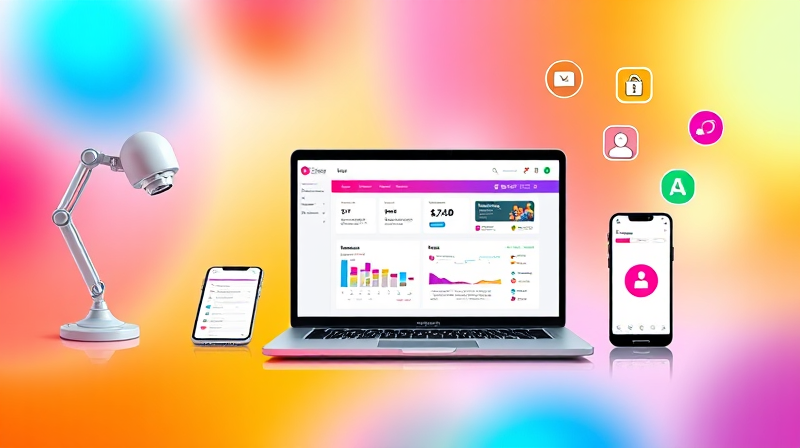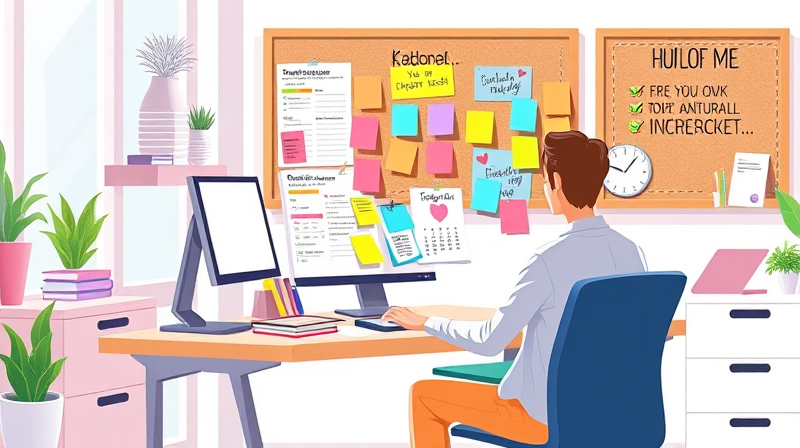In today's dynamic world, staying organized and managing tasks efficiently is the key to unlocking peak productivity. Many individuals and teams have embraced advanced schedulers and task management apps to keep their days structured and their goals in focus. These tools not only facilitate daily planning but also offer a comprehensive overview of projects, ensuring that nothing slips through the cracks.
Whether you're a busy professional, a student, or simply someone striving for better organization, the right scheduler or app can fundamentally change your approach to productivity. Let us explore the diverse range of options available and learn how they are set to redefine task management in the coming years.
Top Task Management Tools
Task management apps have transformed the way we handle our to-dos by providing structured, customizable, and powerful solutions. Among the most acclaimed tools are ClickUp, Todoist, and monday.com. These platforms cater to various needs, from simple daily reminders to complex project management.
- ClickUp: Recognized for its intricate customizability, ClickUp offers different views such as list, board, calendar, and even Gantt charts. This multifaceted approach lets teams and individuals visualize their tasks in ways that best suit their working styles. The incorporation of time tracking and collaboration features further enhances its appeal.
- Todoist: Todoist remains popular for its simplicity and robust functionality. The natural language input feature makes it easy to add tasks on the fly, while the app’s ability to organize tasks into projects and sections ensures that everything stays organized. Seamless synchronization across devices ensures that your to-dos are always at your fingertips.
- monday.com: With its impressive visual project planning capabilities, monday.com stands out as a tool for teams that appreciate an intuitive drag-and-drop interface. It supports diverse project views and automation features, helping eliminate time-consuming manual tasks and paving the way for more efficient workflow management.
Each of these tools offers a unique blend of features aimed at different user needs. The decision to choose one over the others often depends on the specific complexities and goals of your personal or professional projects.
Scheduling Apps for Efficient Time Management
Scheduling apps are indispensable for effective time management, complementing task management tools by enabling you to allocate your hours wisely. Two notable examples in this category are HubSpot Meetings and Doodle.
- HubSpot Meetings: HubSpot Meetings is prized for its seamless integration with other popular services such as Google Workspace and Slack. The platform simplifies the process of setting up internal and external meetings by providing scheduling links and customizable booking pages, making calendar management a breeze.
- Doodle: Doodle targets the critical need for organizing group meetings with its user-friendly interface. Designed to prevent overbooking, this app allows you to set maximum daily bookings and even configure buffer times. This ensures that your schedule remains flexible and manageable, even when meetings multiply unexpectedly.
These scheduling tools assist in turning time into a controllable asset, helping you devote time to the tasks that matter most while eliminating the stress of chaotic planning.
Emerging Trends in Task and Schedule Management
The landscape of task management is evolving rapidly, driven by technological advancements and changing work dynamics. The latest trends in this field are shaping systems that are more intuitive, secure, and proactive. Some of the prominent innovations expected to define the near future include:
- AI-Powered Assistance: Many modern tools now integrate artificial intelligence to enhance decision-making. AI can suggest optimal deadlines, prioritize tasks based on historical data, and auto-assign tasks efficiently. This reduces the time spent on manual sorting and allows teams to focus on high-impact assignments.
- Privacy-Focused Collaboration: With the growing emphasis on data privacy, newer task management platforms are offering advanced features for controlling visibility. This often includes role-based access and private task groups, which enable confidential collaboration without compromising project integrity.
- Predictive Workload Balancing: Tools that analyze team workloads are becoming increasingly popular. By predicting potential bottlenecks and redistributing tasks accordingly, these applications help prevent employee burnout and keep projects progressing smoothly.
- Voice and Chat-Based Task Creation: Incorporating voice assistants and chat-driven inputs into task management systems means that ideas and tasks can be captured instantaneously. This feature is particularly beneficial during dynamic meetings or in hands-free environments.
These trends are not just technological upgrades; they represent a paradigm shift in how we approach daily work and long-term projects. They aim to reduce friction, enhance collaboration, and ultimately make our work lives more efficient and rewarding.
Choosing the Right Tool
Selecting the ideal scheduler or task management app involves assessing your unique needs. Factors such as team size, the requirement for customization, mobile accessibility, and even pricing structures play a crucial role in this decision-making process.
For independent professionals and small teams, the standard free or basic plans offered by many of these platforms may offer ample features to ensure smooth operation. For larger teams or organizations, however, investing in premium plans that provide advanced analytics, enhanced security, and a broader suite of integrations might be the better choice.
It is essential to consider how well the tool integrates with your existing systems, the learning curve involved, and how it scales with your growing needs. By doing so, you can choose a tool that not only meets your current requirements but also adapts to future challenges.
In conclusion, utilizing schedulers and apps to arrange and track to-dos is about creating a seamless workflow that enhances your overall productivity. With the inspiring innovations and trends emerging, there has never been a better time to explore these digital solutions. Embrace the future of task management and transform the way you work with confidence and clarity.







